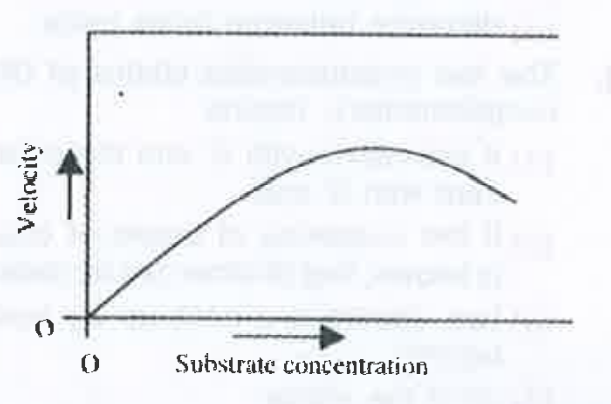Enzymes enhance the rate of reaction by
forming a reactant-product complex
changing the equilibrium point of the reaction
combining with the product as soon as it is formed
lowering the activation energy of the reaction
The correct Answer is:D
Step-by-Step Solution:
1. Understanding Enzymes: Enzymes are biological catalysts that speed up chemical reactions in living organisms. They are crucial for various biochemical processes.
2. Activation Energy Concept: Every chemical reaction requires a certain amount of energy to start, known as activation energy. This is the energy needed to break the bonds in the reactants so that they can be transformed into products.
3. Role of Enzymes: Enzymes enhance the rate of reaction by lowering the activation energy required for the reaction to occur. This means that with the presence of an enzyme, the reactants can more easily overcome the energy barrier to form products.
4. Mechanism of Action: When an enzyme is introduced to a reaction, it binds to the substrate (the reactants) to form an enzyme-substrate complex. This complex stabilizes the transition state and reduces the energy required for the reaction, allowing it to proceed more quickly.
5. Example of Enzyme Activity: For instance, the enzyme sucrase catalyzes the hydrolysis of sucrose into glucose and fructose. Without sucrase, the activation energy required is very high (32,000 calories per mole), but with sucrase, it is significantly reduced to 9,000 calories per mole.
6. Conclusion: Therefore, the correct answer to the question is that enzymes enhance the rate of reaction by lowering the activation energy required for the reaction to occur.
Final Answer:
Enzymes enhance the rate of reaction by lowering the activation energy required for the reaction to occur.
Enzymes enhance the rate of reaction by lowering the activation energy required for the reaction to occur.
Similar Questions
How does a solid catalyst enhance the rate of combination of gaseous molecules?
View SolutionStatement-1 : Electrons releasing group at para position of a migrating aryl group enhances. The rate of reaction in Hofmann's preparation of primary amine from amides.
Statement-2:
View SolutionWhen a biochemical reaction is carried out in laboratory from outside of human body in the absence of enzyme, the rate of reaction obtained is 10−6 times, then activation energy of the reaction in the presence of enzyme is
(a)6RT
(b)P is required
(c)Different forms Ea obtained in laboratory
(d)cannot say any things
View SolutionThe rate constant of a reaction has same units as the rate of reaction. The reaction is of:
View SolutionWhat does the graph indicate ?
The graph given below shows the effect of substrate concentration on the rate of reaction of the enzyme green- gram-phos-phatase.

View SolutionIn the reaction A+B→C+D, the concentration of A and B are equal and the rate of the reaction is rate =k[A][B]. The integrated rate equation for this reaction is
View SolutionBy the action of enzymes, the rate of biochemical reaction
View SolutionEnzymes increase rate of chemical reaction by
View SolutionIncrease in concentration of substrate in case of competitive inhibition results in
(a) No change in rate of reaction
(b) Increase in rate of reaction to original Vmax
(c) Decrease in Km value of the enzyme
(d) Both (b) & (c)
View SolutionThe rate constant of a reaction is equal to the rate of reaction when
View Solution
